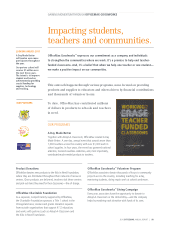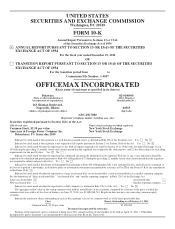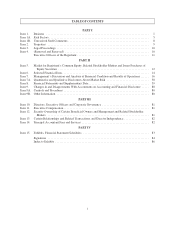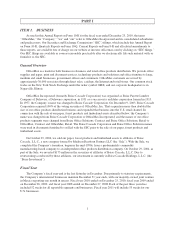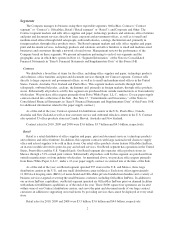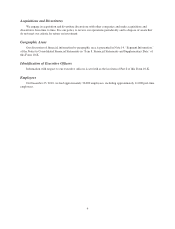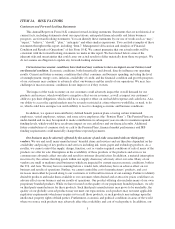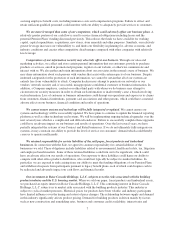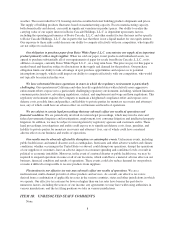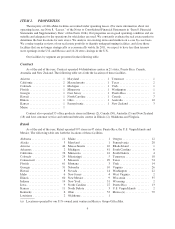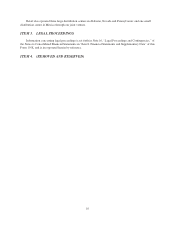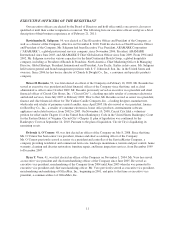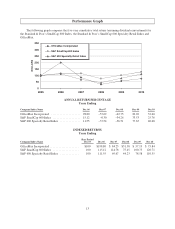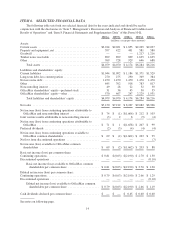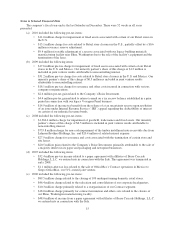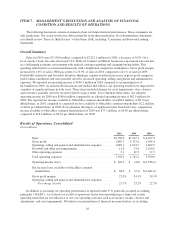OfficeMax 2010 Annual Report Download - page 26
Download and view the complete annual report
Please find page 26 of the 2010 OfficeMax annual report below. You can navigate through the pages in the report by either clicking on the pages listed below, or by using the keyword search tool below to find specific information within the annual report.proprietary branded products compete with other manufacturers’ branded items that we offer. As we continue to
increase the number and types of proprietary branded products that we sell, we may adversely affect our
relationships with our vendors, who may decide to reduce their product offerings through OfficeMax and
increase their product offerings through our competitors. Finally, if any of our customers are harmed by our
proprietary branded products, they may bring product liability and other claims against us. Any of these
circumstances could have an adverse effect on our business and financial performance.
Intense competition in our markets could harm our ability to maintain profitability. Domestic and
international office products markets are highly and increasingly competitive. Customers have many options
when purchasing office supplies and paper, print and document services, technology products and solutions and
office furniture. We compete with contract stationers, office supply superstores, mass merchandisers, wholesale
clubs, computer and electronics superstores, Internet merchandisers, direct-mail distributors, discount retailers,
drugstores and supermarkets. In addition, an increasing number of manufacturers of computer hardware, software
and peripherals, including some of our suppliers, have expanded their own direct marketing efforts. The other
large office supply superstores have increased their presence in close proximity to our stores in recent years and
are expected to continue to do so in the future. In addition, many of our competitors have expanded their office
products assortment, and we expect they will continue to do so. We anticipate increasing competition from our
two domestic office supply superstore competitors and various other competitors for print-for-pay and related
services. Print and documents services, or print-for-pay, and related services have historically been a key point of
difference for OfficeMax stores. Increased competition in the office products markets, together with increased
advertising, has heightened price awareness among end-users. Such heightened price awareness has led to margin
pressure on office products and impacted the results of both our Retail and Contract segments. In addition to
price, competition is also based on customer service, differentiation from competitors, the quality and breadth of
product selection and convenient locations. Some of our competitors are larger than us and have greater financial
resources, which afford them greater purchasing power, increased financial flexibility and more capital resources
for expansion and improvement, which may enable them to compete more effectively.
We may be unable to identify additional sales through new distribution opportunities or replace lost sales.
Our long-term success depends, in part, on our ability to expand our product sales in a manner that achieves
appropriate sales and profit levels. This could include selling our products through other retailers, opening new
stores or entering into novel distribution arrangements. When we sell our products through other retailers we rely
on those retailers to provide an appropriate customer experience and our sales are dependent on the foot traffic
and sales of the retail partner. Although we may have influence over the appearance of the area within the store
where our products appear, we have no control over store marketing, staffing or any other aspects of our retail
partners’ operations. Although we frequently test new store designs, formats, sizes and market areas, if we are
unable to generate the required sales or profit levels, as a result of macroeconomic or operational challenges, we
will not open new stores. Similarly, we will only continue to operate existing stores if they meet required sales or
profit levels. In the current macroeconomic environment, the results of our existing stores are impacted not only
by a reduced sales environment, but by a number of things that are not within our control, such as loss of traffic
resulting from store closures by other significant retailers in the stores’ immediate vicinity. If we are required to
close stores, we will be subject to costs and impairment charges that may adversely affect our financial results.
Failure to increase sales through new distribution opportunities or replace lost sales could materially and
adversely affect our future financial performance.
Our international operations expose us to the unique risks inherent in foreign operations. Our foreign
operations encounter risks similar to those faced by our U.S. operations, as well as risks inherent in foreign
operations, such as local customs and regulatory constraints, foreign trade policies, competitive conditions,
foreign currency fluctuations and unstable political and economic conditions.
We may be unable to attract and retain qualified associates. We attempt to attract and retain an appropriate
level of personnel in both field operations and corporate functions. We face many external risks and internal
factors in meeting our labor needs, including competition for qualified personnel, prevailing wage rates, as well
6



